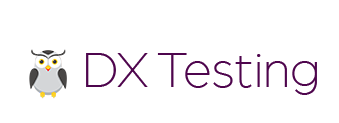In this competitive job market, some companies turn to good benefits deals in an effort to get and retain appreciated employees. And, oftentimes, it’s performing. In a recent study of 2,000 U.S. 88 percent of these surveyed would consider taking a lower paying job with a nice benefits bundle over a high paying job that lacked things like holiday leave or a robust health benefits package deal.
Based on this survey, the most popular benefit is health insurance. “After medical health insurance, employees place the best value on benefits that are low-cost to employers relatively, such as flexible hours, more paid holiday time, and work-from-home options,” says Kerry Jones, whose company, Fractl, conducted the study. But not all offers are as well. We compared seven of the industry’s highest-rated consulting agencies on Glassdoor to see how each company ranked in health insurance, flexible hours, PTO, vacation, and sick leave packages. All seven companies researched offer a extensive health insurance deal offering coverage for medical, eyesight, oral, and prescription. In addition, two companies offer medical flex programs and HSA programs.
500 for single plans. In terms of offering versatile shifts, compressed hours, telecommuting, or a remote option, all seven companies offer flexibility based on the division. It’s interesting to note that it’s not only the plan that influences versatility. Rather, it’s the task culture. For instance, one Glassdoor reviewer said that employees who used the work from your home option along with his former company were frowned upon by management for not adding more to the place of work. So, along with offering versatility, the business that most encourages innovative work agreements within the work culture is Simplus. Simplus: Flexible shifts, work from home option.
PwC: Flexible shifts and work from home options derive from department. Although not considered a traditional part of work versatility, offering compensation for personal and professional goals will probably be worth mentioning since all seven companies have guidelines that support and allow employees to broaden their skill set. Deloitte: Pays 40 percent of salary for worker sabbatical for professional or personal development. Simplus: Full reimbursement of costs associated with Salesforce accreditations. Pay increase upon conclusion. PwC: Partial-to-full reimbursement for professional qualifications. EY: Up-front reimbursement of one certification review course and exam.
Offers bonus for certification. Boston Consulting Group: After five years with company, offers eight weeks of paid sabbatical time. KPMG: Pays 20 percent of base pay for 90 days for personal development and sabbatical efforts. McKinsey & Company: Five to ten weeks unpaid annual personal time. EY: Upon hire, offer 33 days of combined PTO and sick and tired leave. Offer ten times of personal/family treatment leave Also.
Deloitte: Offers 30 to 35 times of PTO leave, which includes sick and vacation time. KPMG: Predicated on tenure, offer a range of 20 to thirty days of PTO leave. McKinsey & Co.: Offers 25 times mixed PTO and sick leave. Boston Consulting Group: Offers three weeks PTO with an increase of based on tenure. PwC: After one year, offer 15 days. After two years, offer 22 times. Boston Consulting Group: Unlimited. Deloitte: Offers 30 to 35 times of combined sick and tired, PTO, and vacation leave.
- Your IRS tax-exemption certificate
- Do we’ve a content calendar set up for another 12 a few months
- You must document your taxes with the IRS by April 15
- 98 doesn’t have USB display drive support built in
- Reach out to community bloggers and comment on 2-3 weblogs per day
EY: Upon hire, offer 33 days of mixed PTO and sick and tired leave. Also offer ten times of personal/family care leave. KPMG: Based on tenure, offers 20 to 30 days of combined sick and tired, PTO, and vacation leave. McKinsey & Co.: Offers 25 days of combined PTO and sick leave. When it comes to unwell leave or personal time, the diverse options offered by these seven companies illustrates the gradual shift of companies to adopt more open leave insurance policies. Jennifer Durrant, publisher of Sourced Media Books, is a writer, editor, and publicist with more than 20 years of experience in the written book, magazine, and paper publishing industries. Her writing has been featured in Forbes, Entrepreneur, Thrive Global, Huffington Post and in daily newspapers throughout California and Utah.
A journalist picking right up your record or narrative from Facebook? Reach tells you your message there is getting out, engagements from the target audience can reveal your message is getting through. Once you are obvious about your selected demographic and the action you would like to create with your campaign, the next thought logically comes after: Where are your market?
What platform do they use? Where will the wider group of stakeholders to your P go to get up-to-date with the latest developments? In all likelihood, that system that answers the questions above is where you should be, but think artistically. Is your goal to make something salient politically? Does that mean targeting the policy niches of Twitter or the mass engagement of Facebook, or both?
What about a distinct website? A blog or a publication? Each individual channel has myriad considerations in approach and exactly how they could be used jointly most effectively. There will be more on that in another blog post, but the general rule is that you should address the conversation relevant to your P where it is happening.
